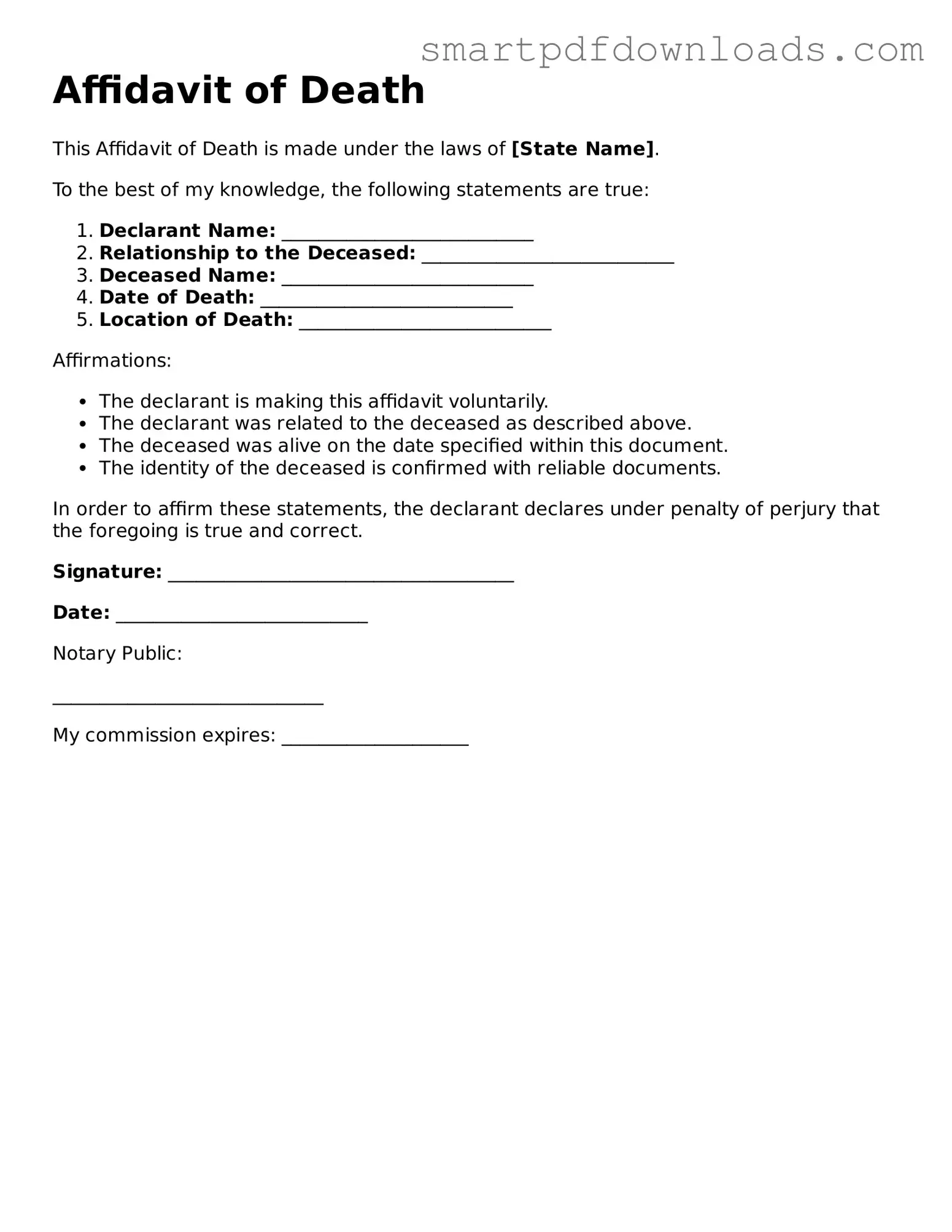Free Affidavit of Death Form
The Affidavit of Death form is a legal document used to officially declare that an individual has passed away. This form serves as a crucial tool for settling the deceased's estate and addressing various legal matters that arise after death. By providing a clear statement of the individual's death, the affidavit helps facilitate the transfer of assets and the resolution of financial obligations.
Edit Affidavit of Death Online
